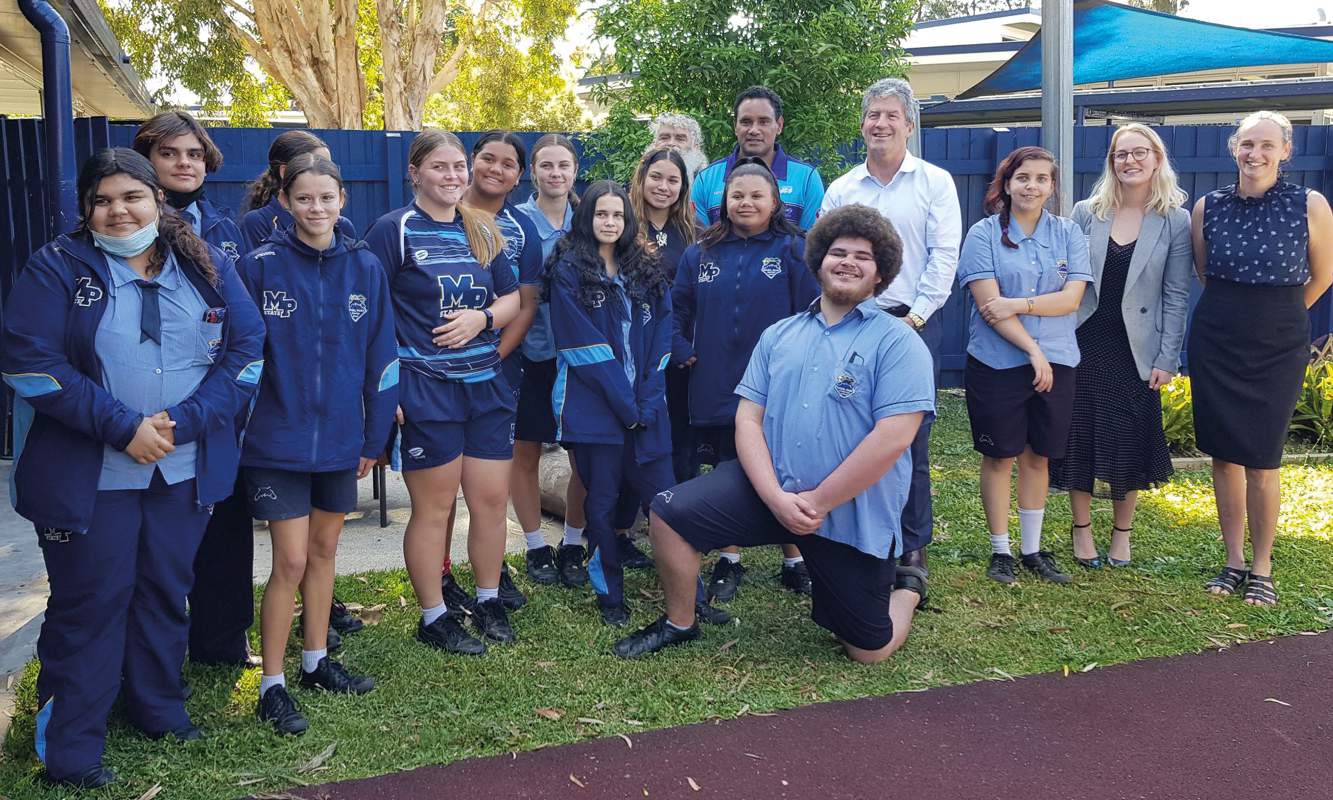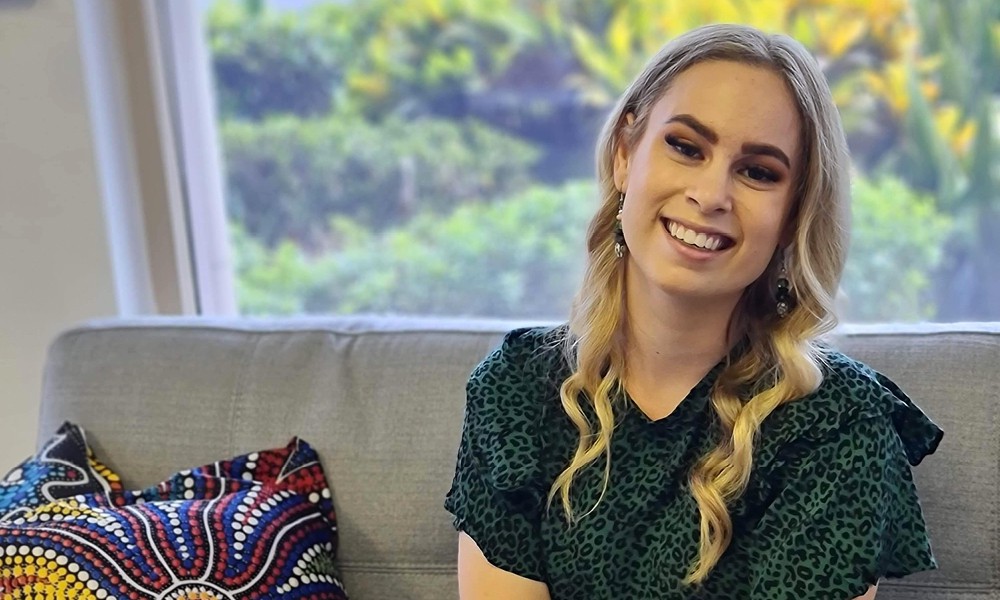LawLink was established by the Queensland Law Society in 2003 with the aim to bring together Indigenous law students and the legal profession.
Dr Terry Hutchinson reflects back on LawLink’s achievements as the program celebrates its 20-year anniversary. She chaired the QUT Faculty of Law Equity Committee 1998-2003 and was a member (2002-2017) and chair (2004-2009) of the QLS Equalising Opportunities in the Law Committee.
“Many of those listed on the QLS Equalising Opportunities in the Law Committee (EOL) meeting agendas in 2002-2004 when LawLink was being planned are well known in Queensland legal circles.
Kylie Torlach, Graham Quinlivan, Grace Kahlert, Jan Logan, Samantha Kane, Gerry Neale, Roland Davies, Mark Ryan, Rachael Murray, Alison Ross and Grace Shepherd were all there working alongside Heron Loban and myself when we were planning the first Lawlink offering in 2003.
It is a tribute to the many hard-working QLS Policy Officers such as Matt Dunn, the QUT Law Faculty Equity co-ordinators Wendy Cusack and Bianca Hill, Oodgeroo liaison officer Maureen Ah Sam, and the many Equity and Diversity Committee members1 during the ensuing decades, that the Lawlink program is still going strong.
And notably some of those students who passed through the program have since been involved in QLS committee work 2 and provide the role models the students felt were so missing in the late nineties.3
Beginnings
A 2003 EOL Committee Survey of Queensland Law Society members established that a mere .2 per cent of the respondents identified as being from an Aboriginal or Torres Strait Islander group, and only 4.8 per cent of our members had English as a second language.4
As a result, the Committee took as its focus the promotion of a more diverse profession in Queensland. Around that time, the QUT Faculty of Law Equity Committee, with the support of the QUT Oodgeroo Unit, and the Equity Coordinator, had established an annual pre-law course for Indigenous students. This was a dedicated, three-day, orientation program for new students covering study, library and IT skills, as well as panel sessions and informal meet-ups with current First Nations practitioners and Law and Justice Studies students. By 2003, we determined there was an additional need for a professional mentoring program, particularly for those students who were in the later years of the degree.
Former legal students.
As a result, in 2003, we initiated LawLink, a liaison program between current Indigenous law students and members of the legal profession to assist the students gain insight into the work undertaken by solicitors in private practice and to establish networks with the legal profession.
This was a joint project organised with the Queensland University of Technology Faculty of Law, the Law Society, and the Oodgeroo Unit at QUT. This was followed by subsequent biannual offerings in 2004, 2006, 2008, and 2010.
The 2006 program was the first to include students from the three universities: Queensland University of Technology, Griffith University, and the University of Queensland. The program received public recognition in terms of a 2007 QUT Equity Award for Reconciliation. The program had its 10-year anniversary in 2013, and so 2023 marks 20 years!
The original objective of the Indigenous Law Students Liaison Program (or LawLink for short) was:
‘to enable Aboriginal and Torres Strait Islander students to gain some familiarity with different arms of the legal profession, the various types of work solicitors do, and to strengthen the students’ networks with members of the legal profession’.
The aims were in fact two-fold. First, the Committee aimed to assist Indigenous law students to gain a greater knowledge of the profession; but just as importantly, there was a second aim, and that was to educate the profession about issues faced by our Indigenous law students.
Program format
An important aspect of the program included visits to various law firms, barrister’s chambers and the courts. The 2006 program. for example, included sessions at Mullins Lawyers, Clayton Utz and Mr Dan O’Gorman’s chambers.
Students were also hosted to a tour of the Magistrates Courts by the then Chief Magistrate Marshall Irwin, the Deputy Magistrate Brian Hine, and Magistrates Zac Sarra and Jacqui Payne.
The standard format for each visit included an Acknowledgement followed by a welcome to the workplace by one of the partners or management team. Following a tour of the premises, the firm’s human resources and legal staff presented on aspects of working in the firm.
Heron Loban and Terry Hutchinson.
As part of the program, the visiting students and academic staff provided some background, comments and discussion about special issues confronting them or about which they may have questions and concerns. One session, for example, included topics such as ‘Life as an articled clerk’ followed by ‘Communication issues facing Aboriginal and Torres Strait Islander people’ which highlighted the fact that a few of our students at that time were coming from backgrounds where English was not spoken at home.
By 2010, the Committee had compiled a procedure manual for the firms and students involved in the program. This included a suggested format for the events commencing with an example of an Acknowledgement of Country, a Registration Form explaining the program objectives, an account of past visits and student feedback, a schedule of visits for the upcoming year, feedback forms, and additional information on the program for those firms hosting a Lawlink Session for the first time.
Students were encouraged to attend all the sessions and an attempt was made to provide visits to a range of different workplaces – small, medium and larger law firms, community legal centres, barristers chambers and the courts. An introductory session was usually hosted by the Society at Law Society House. Wherever possible the sessions were video linked so those law students in the northern parts of the state could be included in the program.
LawLink was an innovative program when it commenced. It was not an individualised mentoring program such as that established by the law schools in South Australia (2004), or by the Bar Association of Queensland. It was not a clerkship or cadetship program assisting students to be placed in employment. LawLink, in contrast, was set up as a group mentoring experience. It was there to not only provide students with sufficient information about the legal workplaces to assist them in choosing a career path, but also to provide another forum to meet with their peers from other universities, First Nations graduates and practitioners.
Mark Frost (left) at one of the events.
The Leaders Forum
Interestingly, in 2009, as a corollary to the program, the QLS Committee hosted an Indigenous Leaders Forum to investigate ways of furthering the links between the Society and the local communities. Topics discussed at this gathering included suggestions that the Society model good practice such as including an acknowledgement at the commencement of QLS events and the need for additional cultural competence training within the profession.
Another group examined the role legal practitioners have in assisting Indigenous communities to understand the whole legal system, including contracts, family, discrimination, in addition to criminal law. The Forum included extensive discussion of the LawLink program and how it could be improved. Suggestions included mentoring programs, cadetships, scholarships, support for attendance at national conferences, and regular combined university law student lunches with First Nations speakers from various arms of the profession highlighting the variety of roles available to law graduates and paralegals. Most of these suggestions were implemented in the following years.
Going forward
The program continues to thrive, and the students who have participated have achieved professional success in a variety of legal workplaces. In 2022, the proportion of solicitors in Queensland who identify as Aboriginal and/or Torres Strait Islanders matched the national average of .8 per cent of the total profession in Queensland.5
This statistic does not include those who were called to the Bar, or higher office, or those who chose to take their skills into other paralegal fields. Queensland still lags in actual numbers behind New South Wales and Victoria.
There is little room for complacency. There are many current programs and extensive sources of information 6 available to the profession through the work of the Society’s Cultural Outreach Strategy and QLS committees such as the First Nations Consulting Committee and the First Nations Legal Policy Committee.
Events such as the Mullenjaiwakka (Lloyd McDermott) Oration and the Mabo Oration provide opportunities for connections not available 20 years ago. Nevertheless, it is through programs such as LawLink that change happens.”
Footnotes
1 Most recently chaired by Ann-Maree David.
2 Ivan Ingram, Terry Stedman, Linda Ryle.
3 Heather Douglas, ‘This is not just about me: Indigenous students’ insights about law school study’ (1998) 20 Adelaide Law Review 315.
4 Terry Hutchinson, 2003 Membership Survey: The Report, Queensland Law Society, 2006.
5 Urbis, 2022 National Profile of Solicitors – Final, Prepared for the Law Society of NSW, 26 April 2023, 12.
6 https://www.qls.com.au/About-us/First-Nations/First-Nations-Resources










Share this article